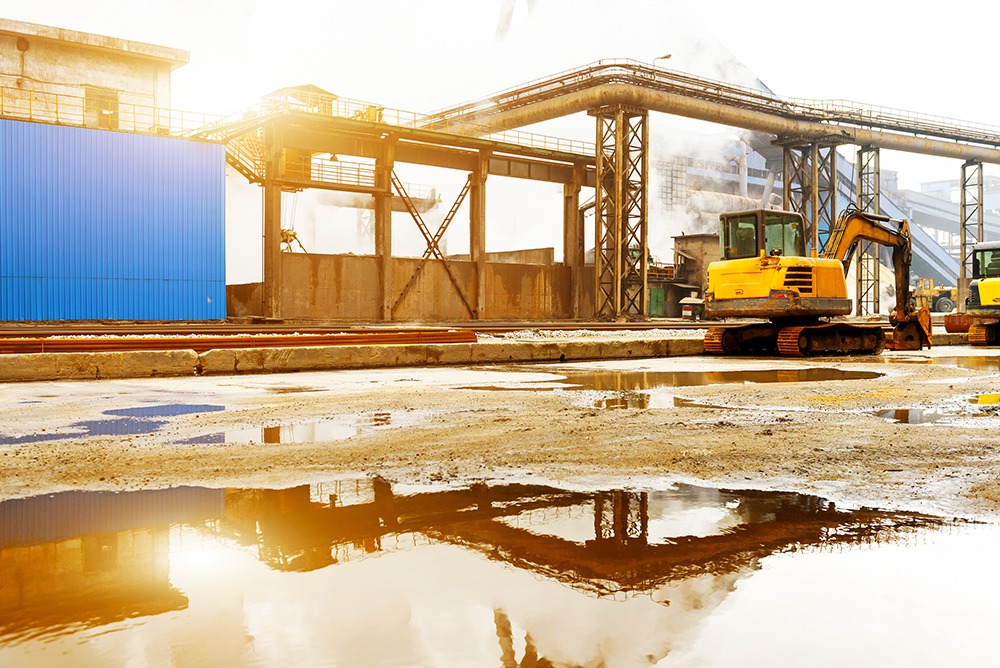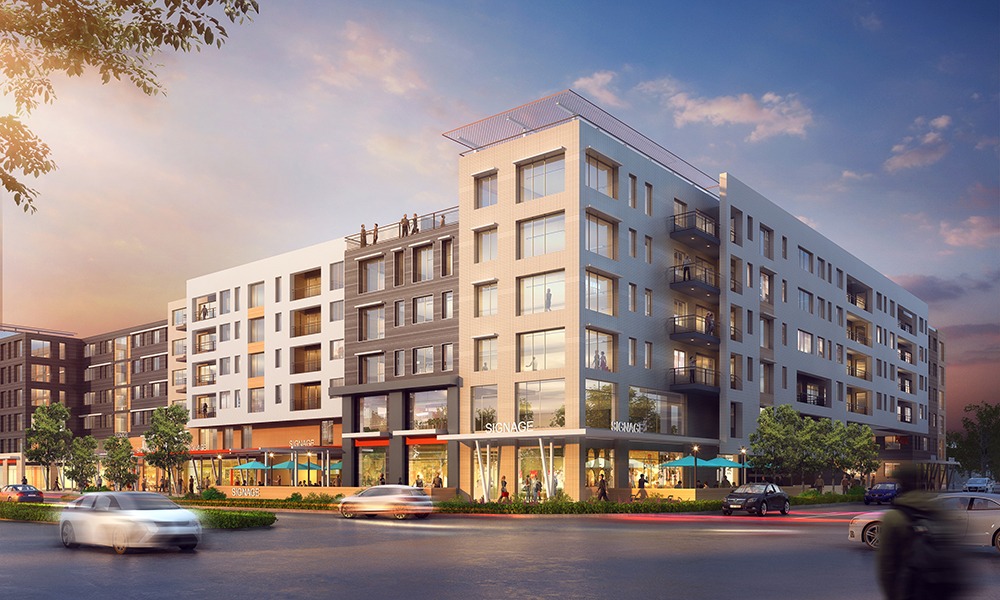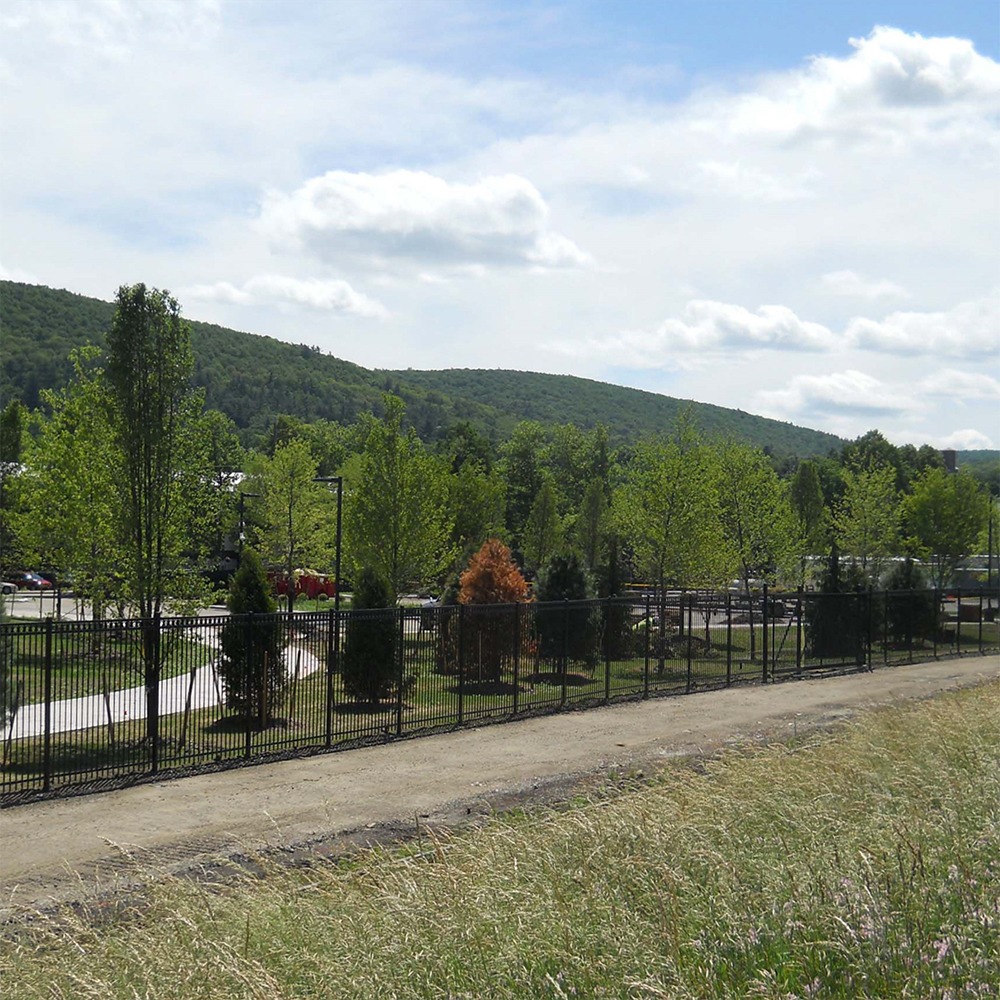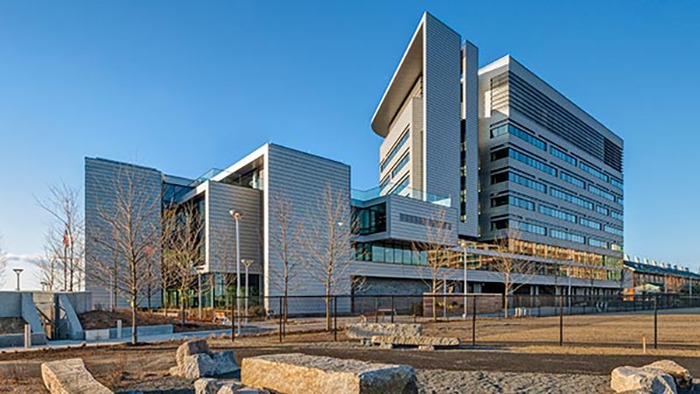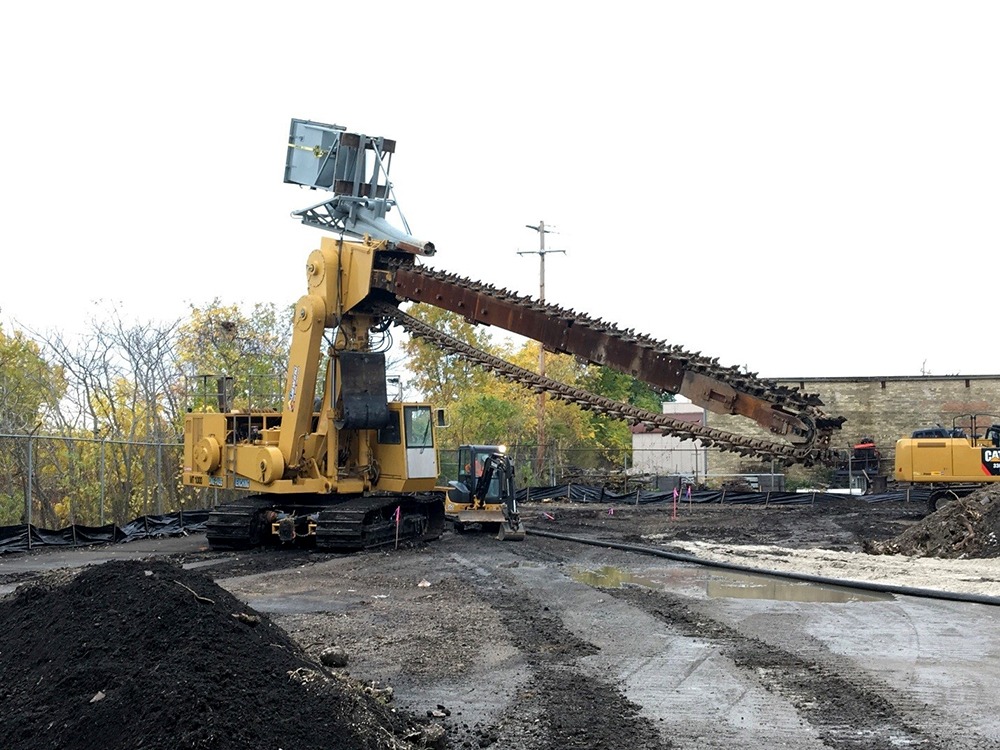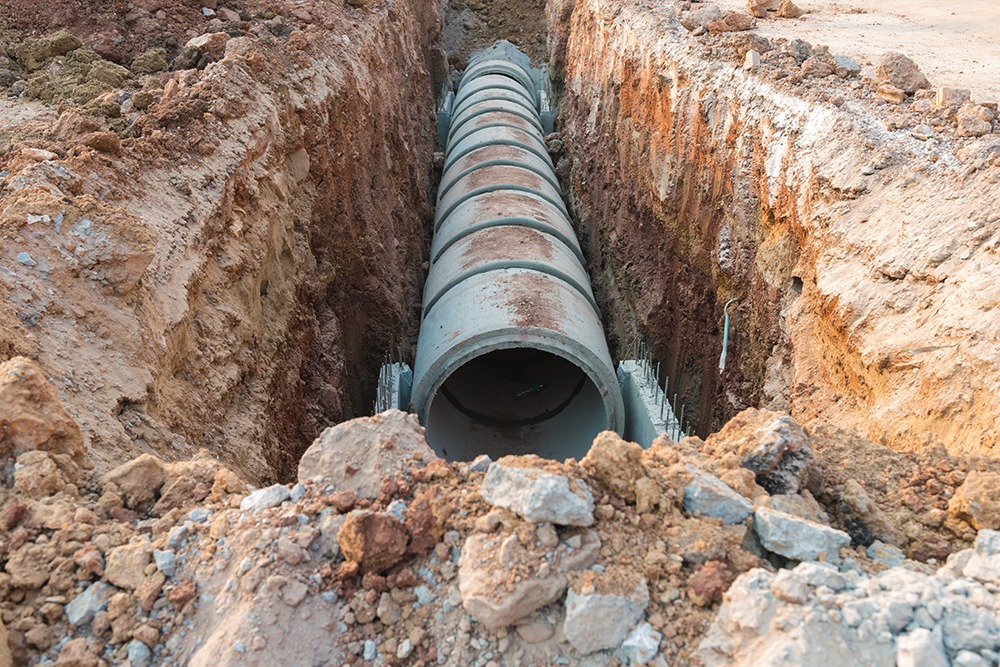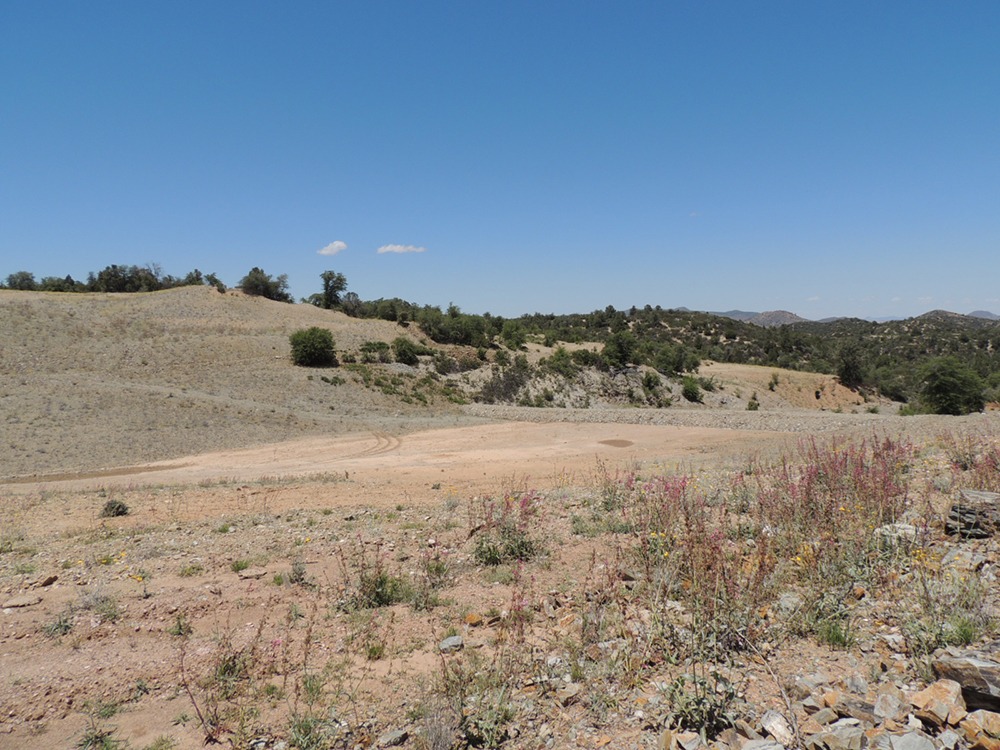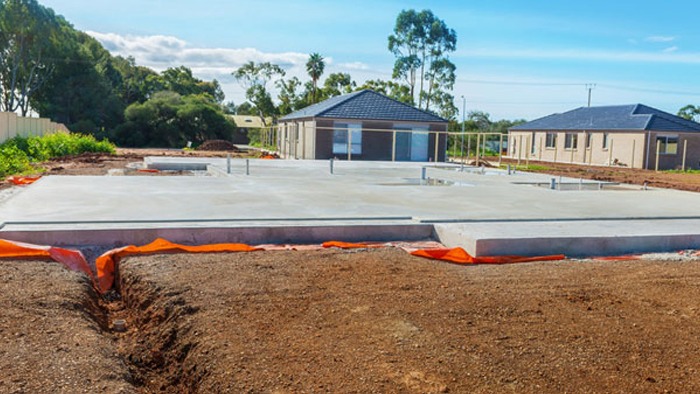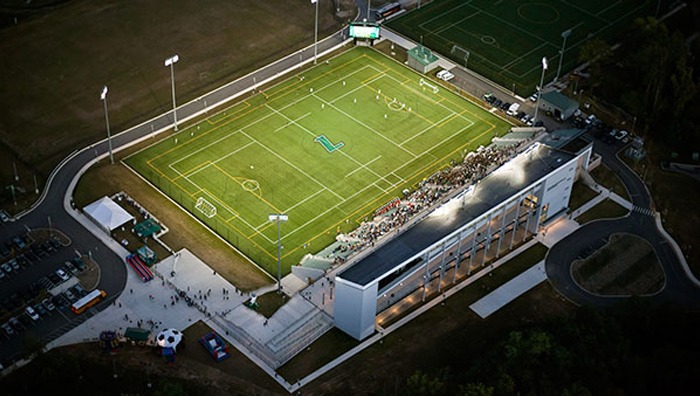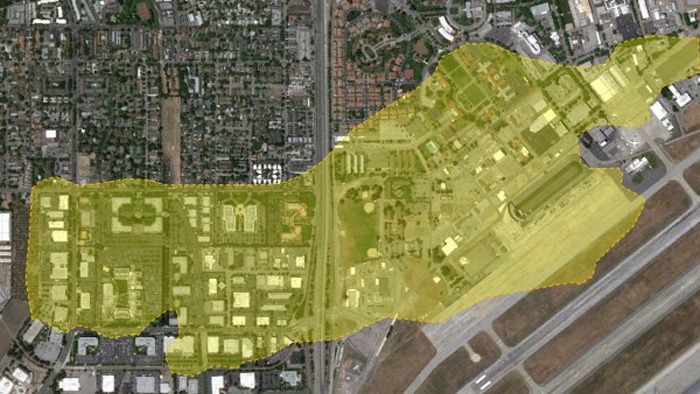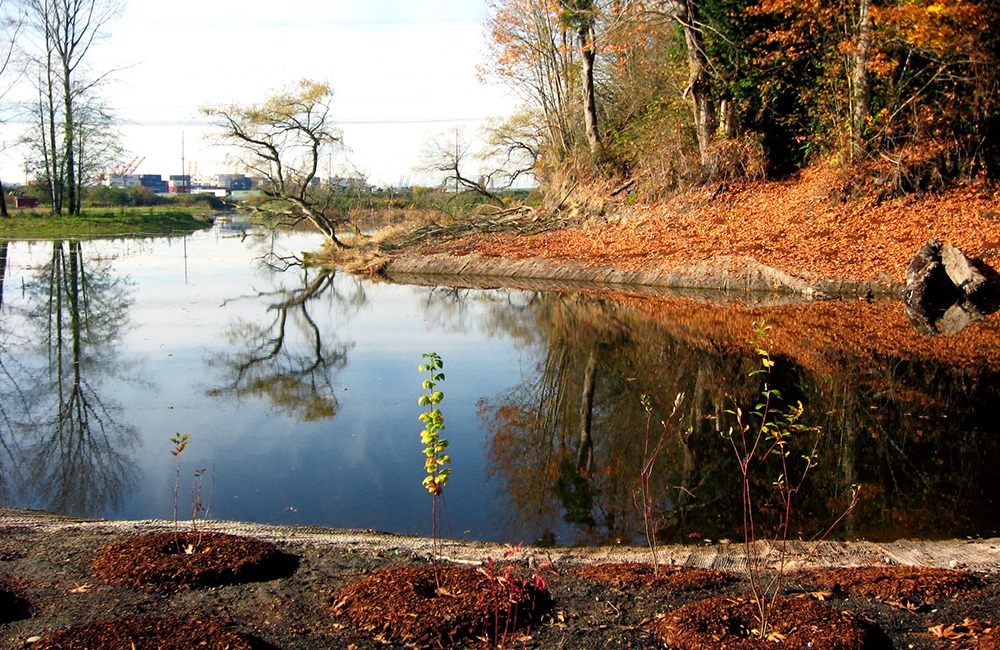
Industrial Minerals
Complex environmental cleanup restores valuable intertidal habitat at former mine site
40%
more habitat created than expected
35,000+ native plants
in new habitat area
255,000 tons
of remedial excavation material removed
Summary
- The Port of Tacoma, Washington, had to remediate and restore the extremely contaminated site of a former gravel mine and landfill. Investigations revealed that contaminants had entered the underlying groundwater and threatened to harm aquatic life in nearby Hylebos Creek.
- The project presented unusual complexities because it paired a large cleanup with extensive habitat restoration. Also, debris filled the site, which sat at the base of a potentially unstable hill. The geotechnical and environmental design for the site also had to fulfill mitigation obligations from five different sources.
- Haley & Aldrich brought a suite of services — geotechnical, environmental, and field-engineering expertise, along with construction oversight — and worked with multiple stakeholders to balance remediation requirements, soil removal costs, habitat mitigation, and recontamination risk (to minimize potential future cleanup).
- The restored site now provides essential habitat for salmon and other wildlife and is open to the public.
Client challenge
Our client, the Port of Tacoma, sought to remediate and restore a blighted gravel mine and inert landfill site into a natural waterfront habitat. However, the site was extremely contaminated, containing concrete debris, invasive plants, old growth stumps, and contaminated soil. Investigations revealed that contaminants had entered the underlying groundwater and threatened to harm aquatic life in nearby Hylebos Creek. This was an unusually complex project because it paired a large cleanup with extensive habitat restoration. The goal was to create five separate mitigation areas — each with its own requirements — across a geologically complex and potentially unstable site.
The scope of mitigation obligations had ballooned with input from several stakeholders and having to fulfill separate mitigation obligations from five different sources. Stakeholders included natural resource trustees, native tribes, the City of Tacoma, the Army Corps of Engineers, and utilities that maintained the site’s access road. The geotechnical and environmental design for the site also had to fulfill separate mitigation obligations from five different sources. The unusual complexity of the project would require tradeoffs in the design process, while ensuring effective remediation and habitat creation.
Complex mitigation obligation sources:
- The Natural Resource Damage Assessment (NRDA)
- A previous permit’s requirements and violations
- A separate port construction project impacted by this effort
- Department of Natural Resources (DNR) mining reclamation
- Advanced mitigation requirements in adjacent areas for future credits
Concrete, asphalt, soil, wood debris, and miscellaneous building materials were likely present and would need to be remediated or removed. Correctly characterizing the site and finding contamination limits would be essential.
The site was also located at the base of a large hill, and the stability of the slope, the geometry of the proposed ravine area, and a maintenance access road dictated the area available for the habitats.
The Port of Tacoma asked our team to provide geotechnical, environmental, and field engineering expertise, along with construction oversight, due to our ability to find creative solutions during challenging and complex projects.
Our approach
Our team creatively applied existing technologies to balance the competing needs of cleanup requirements and habitat mitigation obligations, while being resourceful when challenges arose in the field.
Striking the right balance
Our aim from the start was to balance cleanup requirements and costs for the best outcome. We collaborated with several project consultants and port team members to consolidate insights and obligations. To satisfy the often-conflicting requirements, we guided multiple stakeholders through our iterative design process. Through a series of tradeoffs, we struck a balance between remediation requirements, soil removal costs, habitat mitigation, and reduced recontamination risk (minimizing potential future cleanup).
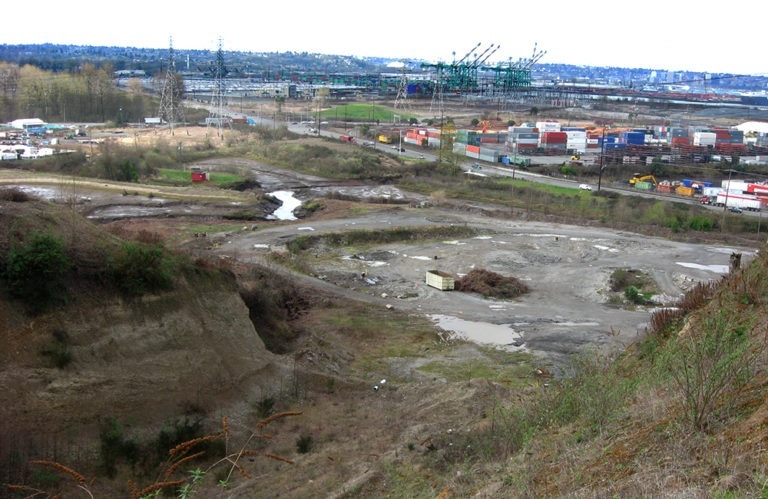
Tapping our team’s integrated engineering and environmental expertise, we designed one project to encompass five separate mitigation areas — intertidal marsh, wetland, riparian, upland, and buffer zones — which reduced overall construction costs. In one instance, to meet the DNR’s reclamation requirements, our team reused 70,000 cubic yards of on-site soil to stabilize the steep ravine area. Now, the nearly 30 acres of new and restored habitat area exceeds the original 21 acres planned for the area by over 40%.
Employing adaptive remediation
We also had to strike a cost-benefit balance for excavation, identifying enough subsurface risks to predict expenses without exceeding budget during the pre-design investigations. Before construction began, we collected data to determine the required amount of excavation. Once construction was underway, we made real-time decisions to adjust the excavation at every stage of the remediation. This conservative approach also prevented toxins from entering the new habitat area and surface waters.
During the large upland cleanup, we removed the contaminated, unsuitable soil and invasive species, while implementing an extensive soil preparation plan and planting native species in the creek beds. This approach enabled wildlife to reach the creek, which will promote native plant growth and curb the return of invasive plants.
In several areas, when we uncovered contamination that extended into deeper soils, we turned the unexpected into a win and created more habitat area. We used our assessment of groundwater contamination and its potential to migrate to surface water and new habitats to inform our excavation approach and habitat design. To overcome seeps from the hillside, for example, our design incorporated berm breaching and construction water management practices to prevent discharges from flowing into the creek.
Designing an innovative slope
Our team needed to think outside the box in our approach to designing the slope considering the site’s location at the base of a large ravine and the challenges that introduced. Our design included a rock buttress of quarry spalls that stabilized the toe of the slope with its added mass and provided permanent drainage. To minimize surface erosion, we incorporated vegetation into the design. Finally, we added topsoil over the rock buttress so grass and small shrubs could grow over and conceal the rock, while adding to the habitat’s aesthetic.
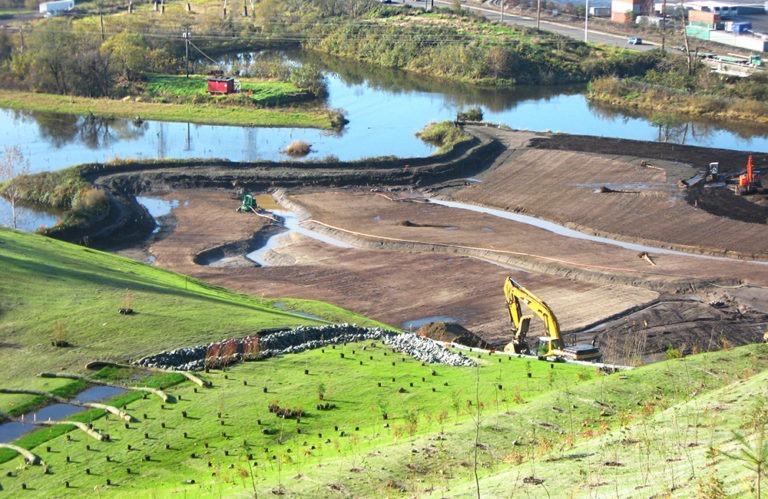
Delivering community and environmental value
In addition to addressing the site contamination, our design added public access via a viewing deck that overlooks the habitat channels. Additionally, we reused concrete debris as fill at other port sites and placed old-growth stumps to create more natural fish habitat. We removed invasive species to allow native plant growth and created a low-impact design stormwater facility to treat parking area runoff that also provided adult and juvenile salmon a place to acclimate.
Besides achieving project cleanup goals and regulatory closure for the site, it is now restored to its natural state. The extremely valuable intertidal habitat at the mouth of Hylebos Creek allows water to flow from the creek into the newly created intertidal zone and streams, providing resting and feeding areas for juvenile salmon and habitat for native plants, water birds, and other wildlife.
By the numbers
- Constructed just under 30 acres of new and restored habitat area, 40% more than originally planned
- Completed a 255,000-ton remedial excavation clean-up
- Navigated five separate habitat mitigation obligations
- Created new upland habitat areas landscaped with over 35,000 native trees and shrubs
- Reused 70,000 cubic yards of on-site soil to fill a steep ravine left from past aggregate mining
For more information, contact:

Principal Consultant

Program Manager

